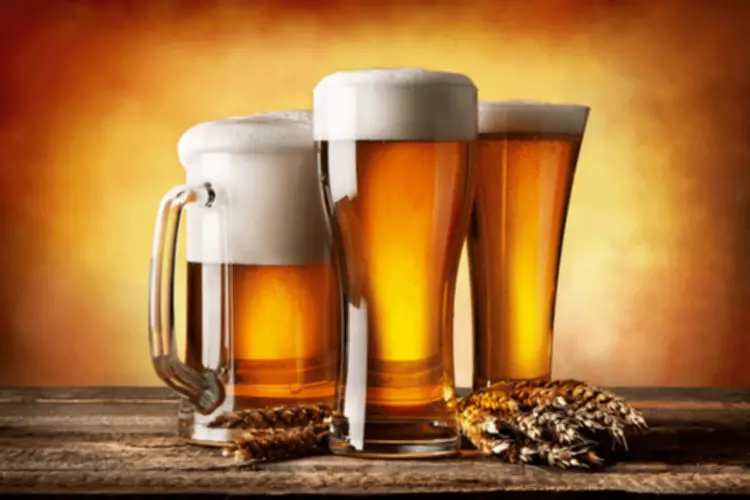In some cases, the kinship caregiver will not wish to seek designation or serve as a supportive placement for a child as identified in paragraph (b)(1). Living amends is the part of your recovery where you must “walk your talk” by incorporating positive, healthy habits into your new sober lifestyle. These amends affirm your commitment to sobriety and focus on how you’ll become a better person moving forward. MHA Screening is an educational program intended to help inform people about options they have in getting help for mental health issues. It may suggest tools and resources that offer information, treatment services, self-help (or “DIY”) tools, and/or ways to connect with others. It does not represent its results as an exhaustive list of all services available to a given individual for a given mental health concern, as an endorsement of specific treatments or services, or as a replacement for treatment or services as performed by a qualified provider.
Section 1355.22(b)( Designated Placements and Services for LGBTQI+ Children

Harassment, mistreatment, and abuse as contemplated by the rule are conduct, not speech. This is particularly so because harassment under the rule requires severe or pervasive acts that create a hostile environment, a standard that applies elsewhere in the law. Several commenters expressed concerns that children may feel unsafe disclosing their LGBTQI+ identity or reporting mistreatment in their current out-of-home placement due to their sexual orientation or gender identity.
- But what happens when the person you need to make amends with dies before you’re able to apologize and change your ways?
- If I harmed someone, and then in the course of working the steps reach a point to make an amend, it is my duty to sit down with the person and explain fully about substance abuse, my own personal program, what my fears were, and how I have changed as a human being.
- Other government entity commenters opposed the rule and stated generally a belief that the NPRM creates a separate and distinct process for LGBTQI+ youth that violates privacy, and raised concerns related to religious beliefs of providers.
- Direct amends are not always possible or practical, but that doesn’t mean the individual is unable to demonstrate changed behavior.
- If you find yourself jumping to make things right, that’s a great instinct!
- Government entity critics of the NPRM also argued that it creates a “cumbersome fix” for a problem that lacks clear definition while states are currently having issues finding enough providers for all children in foster care.
Designated Placement Requirements Under Titles IV-E and IV-B for LGBTQI+ Children
It would be nice if the above outcomes were universal—but they aren’t (of course). Making amends won’t necessarily play out like the ending of a Hallmark movie. They may refuse to meet at all or refuse to listen to what you have to say. On the opposite side of the street are those individuals who simply say, “All of my amends would hurt people. I’m just not going to speak to anyone.” Avoid the temptation to get out of this step.
Get Help With Alcohol Addiction
Step 9 of A.A.: Making Amends – Coping and Recovery – Verywell Mind
Step 9 of A.A.: Making Amends – Coping and Recovery.
Posted: Thu, 01 Dec 2022 08:00:00 GMT [source]
Those states or entities who opposed the NPRM also argued that it creates a “cumbersome fix” for a problem that lacks clear definition while states are currently having issues finding enough providers for all children in foster care. Finally, there were objections to what they saw as unfunded burdens on the agencies to develop new trainings, modify licensing and placement rules, and revise case management systems to track placements, notifications, and other requirements in the NPRM. The final rule requires agencies to notify certain children about the availability of Designated Placements, the process to request one, and the process to report concerns about their current placement or about retaliation against them. The final rule also requires that the title IV-E/IV-B agency ensure that LGBTQI+ children have access to age and developmentally appropriate services that support their needs related to their sexual orientation and gender identity or expression.
Making an amend means taking accountability and action to repair any damages done. Through these restorative actions, you demonstrate your commitment to change. A primary mental health, substance use, and process addiction center offering a continuum of care and holistic healing living amends in the Sonoran Desert for 35 years. Many people find that the support they receive from AA meetings helps them prepare to make amends. Talking with your sober community about your history with drugs or alcohol can help you identify what you need to make amends for.
- When you make amends, you acknowledge and align your values to your actions by admitting wrongdoing and then living by your principles.
- You may have a list of people you want to make amends to personally.
- We cannot give you customized advice on your situation or needs, which would require the service of an actual attorney.
- In ACF’s view, this rule should not dissuade any entity that does not meet the definition of a Designated Placement, whether for religious or secular reasons, from continuing to participate in the foster care program.
Section 1355.22(h) Training and Notification Requirements
For example, we might intend to go to a friend’s birthday party, but in actuality, we fail to show up for the event. While we might apologize later for missing the party, our apology consists of words rather than actions or changed behavior. Cake offers its users do-it-yourself online forms to complete their own wills and generalized educational content about wills. Many users would be better served consulting an attorney than using a do-it-yourself online form. The fees for the advice of an attorney should not be compared to the fees of do-it-yourself online forms. We cannot give you customized advice on your situation or needs, which would require the service of an actual attorney.

What Do You Say When Making Amends? – The Step 9 Amends Letter
- Before adding amends to your list, think about your motives for contacting this person and work with your sponsor to determine next steps.
- For example, some people may require medically supervised detox as a first step, followed by residential alcohol treatment.
- As explained further below, when making placement and services decisions related to an LGBTQI+ child, the title IV-E/IV-B agency must give substantial weight to the child’s concerns or request for a Designated Placement in determining the child’s best interests.
But those making the amends find many times that the person to whom they have harmed is more than willing to accept those amends happily—and a healing process begins not only in the relationship but in each individual. After completing Step 8—made a list of all persons we had harmed, and became willing to make amends to them all—the next logical step is to make those amends if possible, and the suggestion is to do so directly to those who have been harmed. By making direct amends to the person harmed the temptation to skirt the issue because of embarrassment or pain is avoided. We can also make a living amends by changing the behaviors that hurt or harmed them, and we can let go of the all-consuming guilt that would only tempt us to use again. After all, years of drug or alcohol abuse will not be undone with an apology or a few simple words. We need to prove to our children that we are seriously addressing our addiction, not just offering cheap words.
When and Why Do People Make Living Amends?
In response to these concerns, HHS has revised the terminology used in the final rule. The rule now uses the phrase “Designated Placements” as shorthand to refer to providers that are specially designated to serve LGBTQI+ children because they have made a set of commitments and undergone training to better meet the needs of LGBTQI+ children. State and Tribal agencies must have available a sufficient number of these placements as part of their responsibilities to satisfy the statutory requirement that all children in foster care have access to a safe and appropriate placement. Second, ACF acknowledges the concerns of commenters that families who do not meet or seek to meet specified requirements to serve as a designated provider for LGBTQI+ children could be mislabeled as “unsafe” under the terminology of the proposed rule. ACF acknowledges the particular concerns of faith-based providers and families of faith who serve as foster families. We appreciate the vital role that many families and providers of faith play in the child welfare system, and ACF is committed to upholding Federal legal protections for religious exercise, free speech, or conscience as further discussed in the “Response to Comments Raising Statutory and Constitutional Concerns” section of this preamble.
Remembering how I stole from you makes me sad and fills me with shame. While I did these things in active addiction, that does not take away from how wrong they were, and the pain and sense of betrayal you must have felt as a result of my actions. When we harm others, we harm ourselves in the process, and rationalizing or defending only makes us feel worse. It causes us to feel a more profound shame as it pulls us from our humanity and connection — accountability and making amends help us heal the other, which allows us to forgive ourselves. The Native Americans understand that restorative justice was a process of accountability and repair that heals the entire community.










